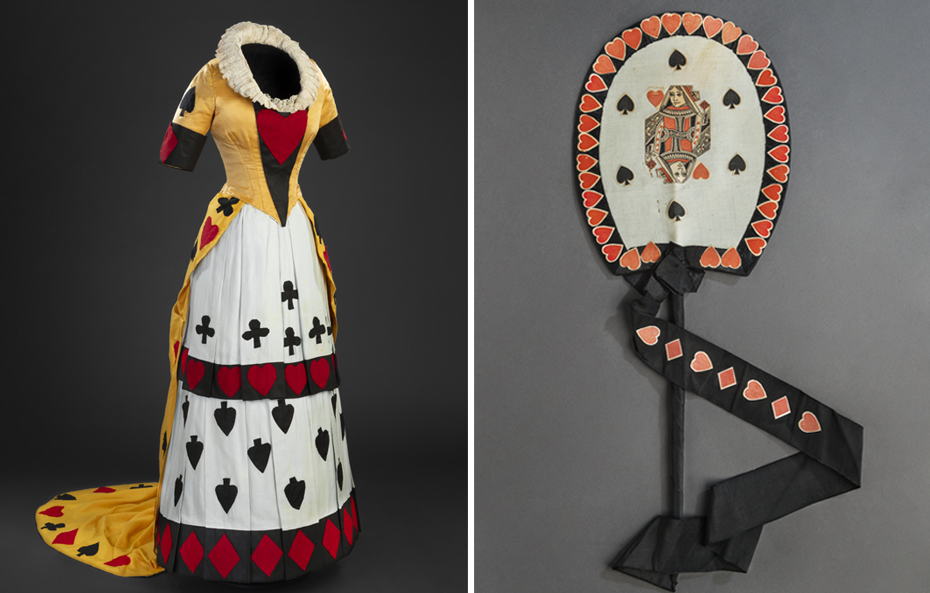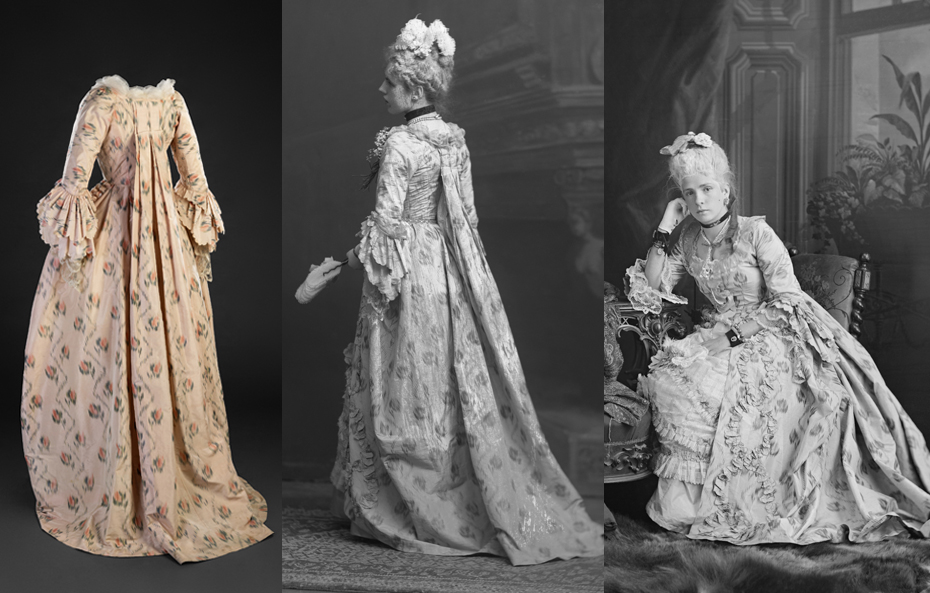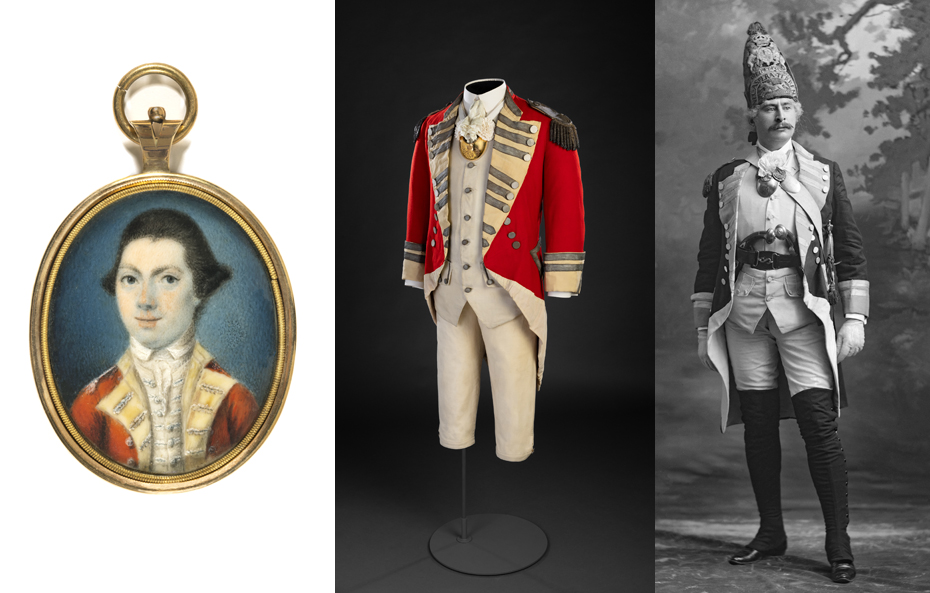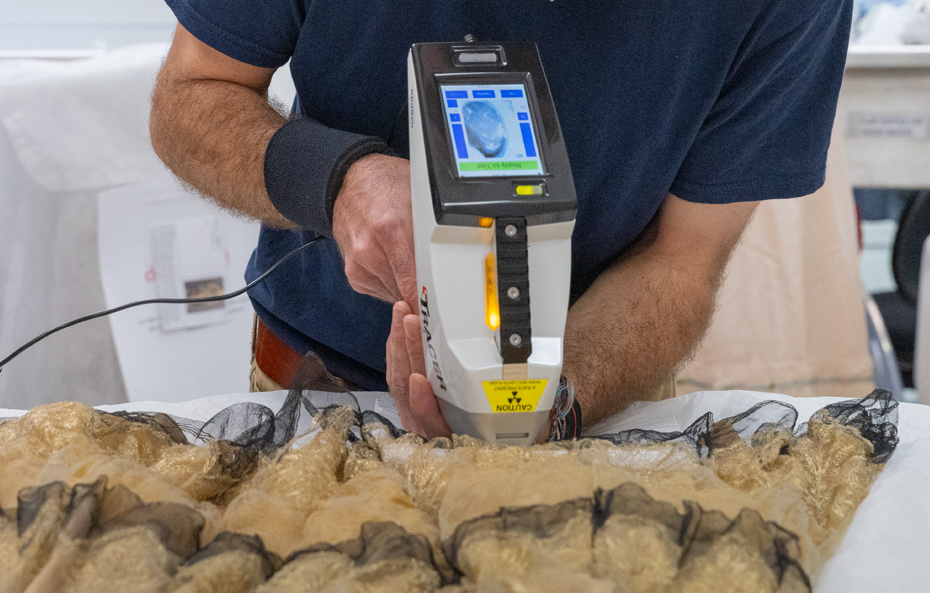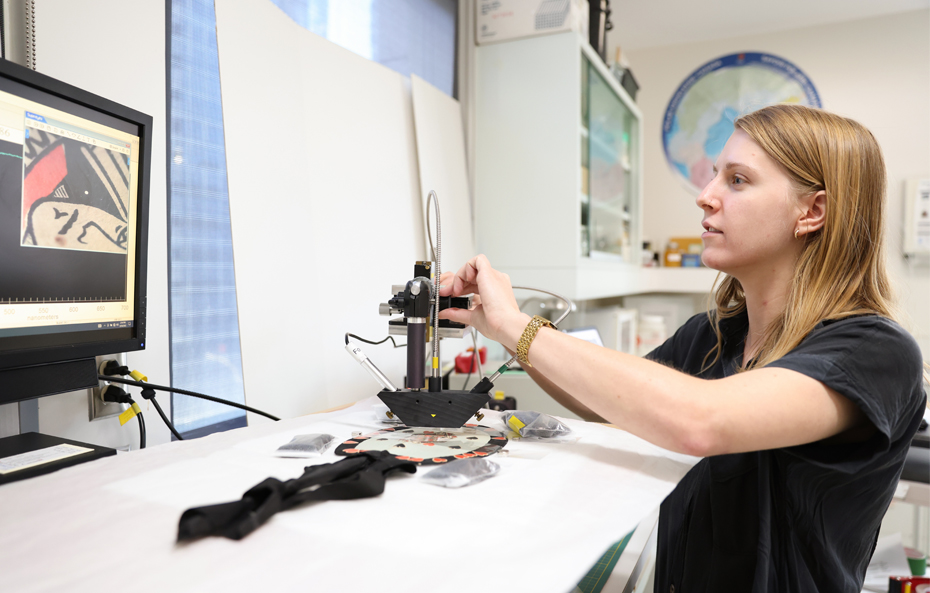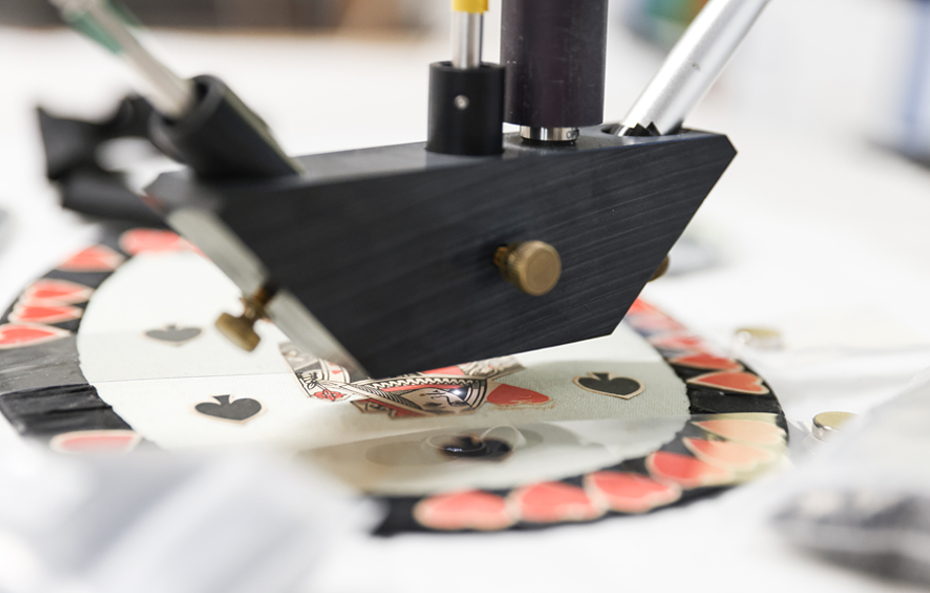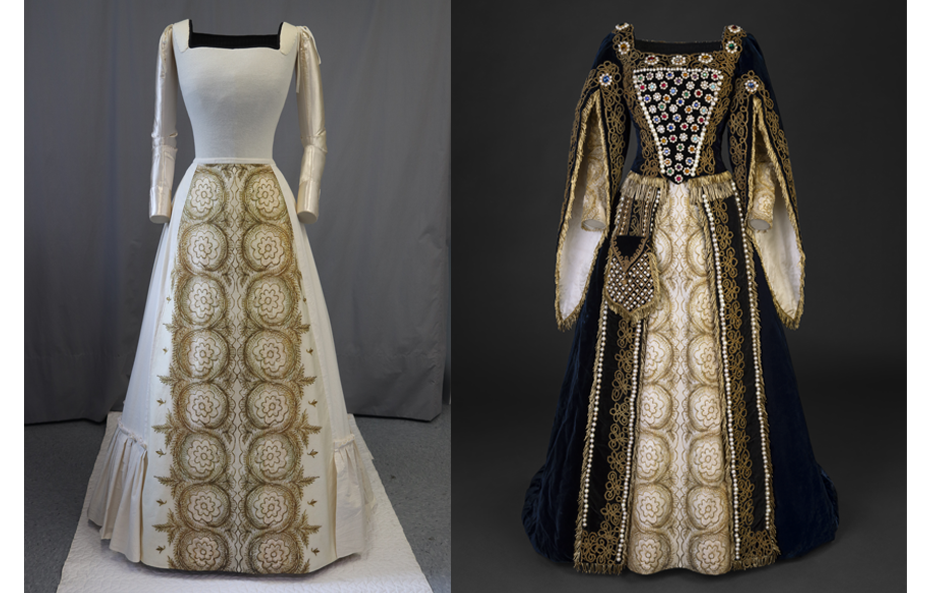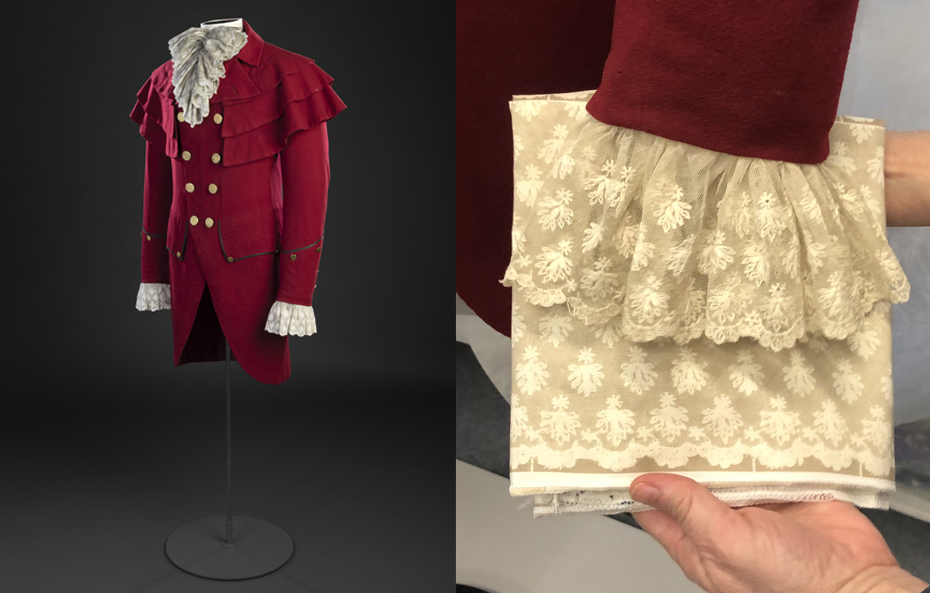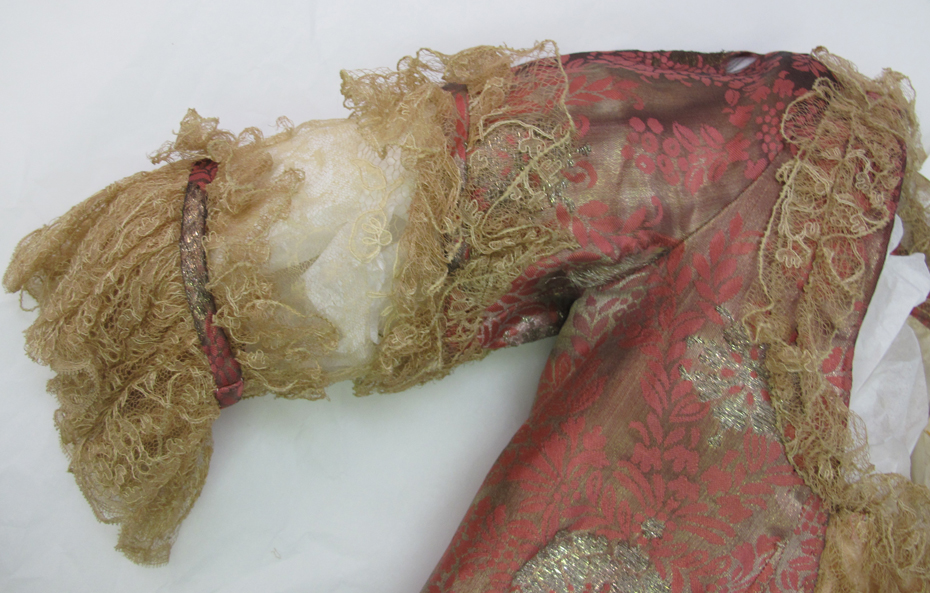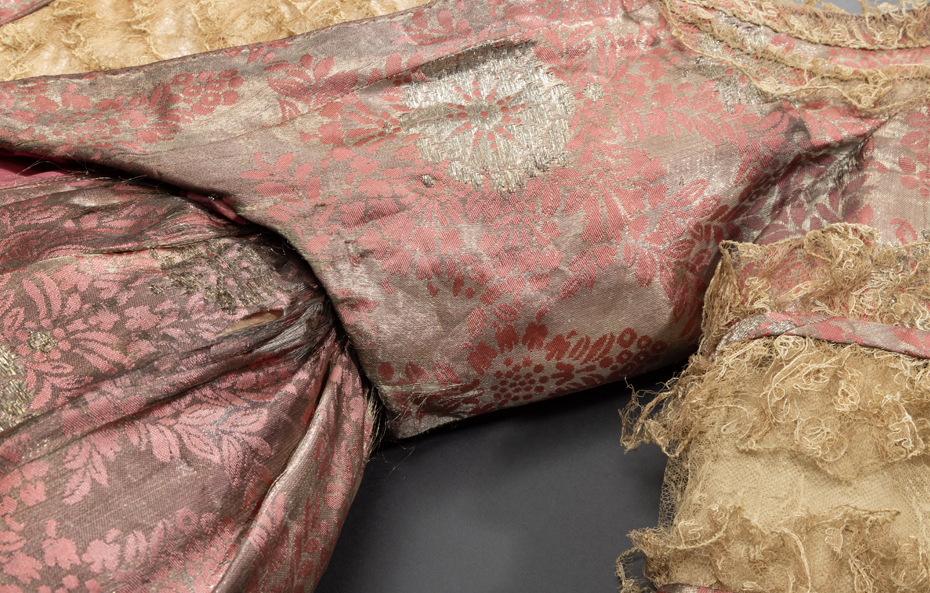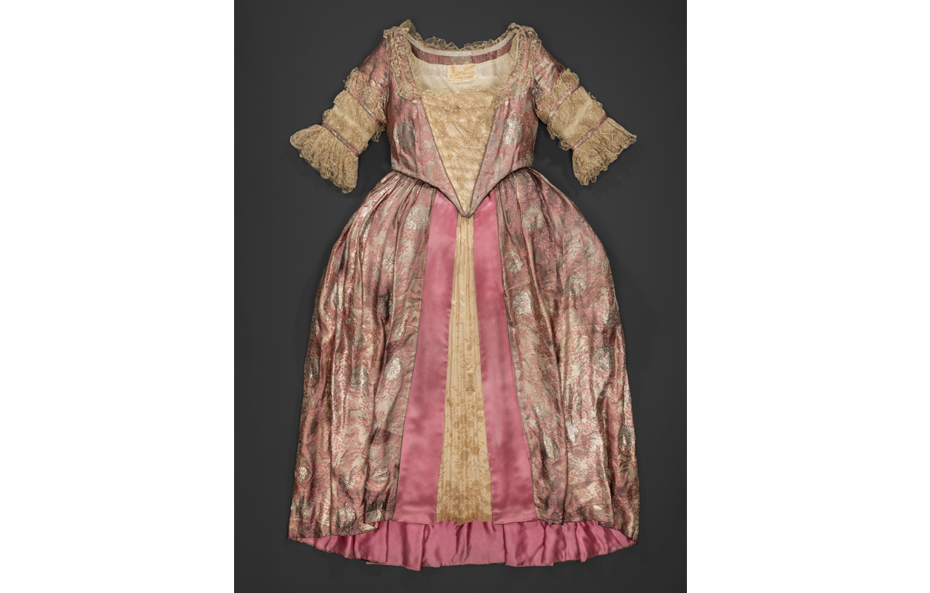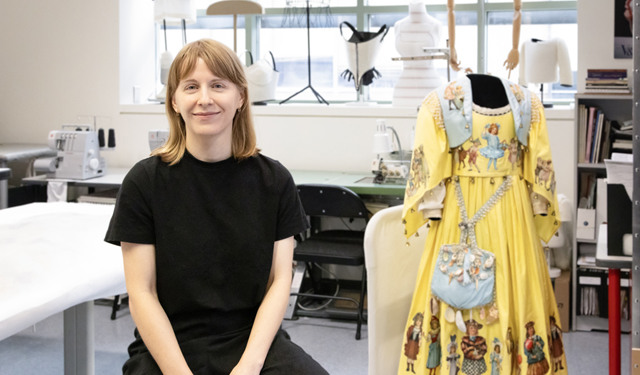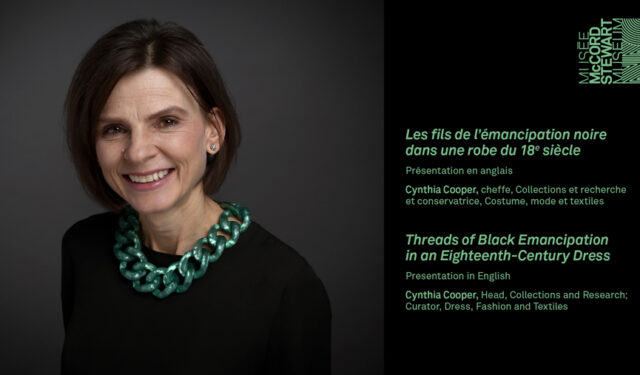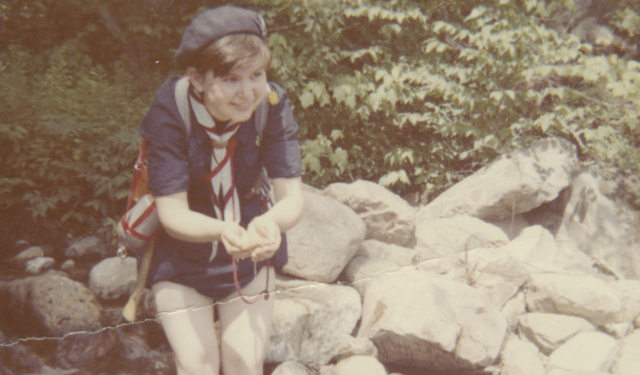Creative conservation
Unravel the complexity of conservation around costumes and objects in exhibition Costume Balls: Dressing Up History, 1870-1927.
November 11, 2024
The Costume Balls: Dressing Up History, 1870-1927 exhibition gave us an exceptionally complex and wide-reaching assignment. For a period of two years, a team of five people—two conservators, two mount makers and the Head, Conservation—found themselves immersed in an environment where, almost daily, they were confronted with a complex garment or accessory that was most often made to last for a single evening, yet had survived for over a century.
| Meet the restoration team and discover their work in the context of this exhibition. |
The ephemeral nature of the objects, the distinct character and history of each one, as well as the atypical abundance of archival sources are some of the aspects of this collaborative project that made it so enriching.
Conservation practice today
Exhibitions are, in many respects, the raison d’être of museums. However, the very act of exhibiting an object can set in motion its physical deterioration. As a result, there has traditionally been tension between the ideas of preserving and using museum collections.
Today, conservation is generally understood to encompass all actions taken to ensure the long-term preservation of cultural heritage, ranging from examination and documentation to treatment and preventive care. Our practice is grounded in the material nature of physical objects and their significance. We seek to understand how objects have changed over time. By preventing further damage, our actions strive to mitigate any loss of meaning and are aimed, when possible, at stabilizing an object’s condition. In fact, understanding the intrinsic values and significance of objects has become as important as preserving their physical integrity.
Conservation for the exhibition
The treatments we performed ranged from the simple consolidation of broken seams to creative problem solving, from the use of new conservation materials to experimentation with innovative ideas, and from minimal intervention to many consecutive hours of treatment. The fact that each garment in the exhibition was distinctive forced conservators to be exceptionally inventive and adopt an original treatment approach, while respecting conservation best practices.
The way we see, interpret, and value clothing is affected by the social and cultural context (for example, contemporary notions of what is aesthetically pleasing), as well as evidence of its physical transformation (such as fabric discoloration). Conservators study objects to uncover keys to interpreting and understanding their change over time. In museum practice, physical changes to historical objects often used to be seen as undesirable, with the assumption that bringing an object back to its original state was the right thing to do. Nowadays, even though physical changes typically fall into the category of damage or deterioration, it should not be assumed that efforts to reverse them are warranted.
The often-ephemeral nature of many of the garments, which were clearly not created to last, made it quite challenging to identify and recreate the original form of an ensemble.
One costume clearly not meant to last the test of time is the “A Deck of Cards” outfit, where paper elements were coarsely glued to the fan.
| Conservator Sonia Kata talks about about the restoration treatment she carried out on the fan. |
We found that fancy dress costumes came in many forms, some of which were anything but ephemeral. For example, extant dresses from earlier periods were worn by those who owned such heirlooms or wanted to show their family connections, like the young women who portrayed “The Baronne de Beaumouchel”
We studied outfits that were created specifically for the purpose of fancy dress, like that of the “Captain James Leslie” character, an almost identical reproduction of a uniform seen in a portrait miniature of him.
Scientific analyzes
To avoid making assumptions, we must gather data and create in-depth documentation, which is why conservation entails a variety of scientific analyses. With the help of highly sophisticated instruments, we were able to collect technical data to better evaluate the sources of physical damage and consequently devise effective treatment proposals, as well as add to our historical information.
The XRF (x-ray fluorescence) machine determines the chemical composition of materials. We used XRF to identify heavy metals on the surface of fabrics. In the later nineteenth century, lower quality silk was sold by weight, meaning that heavier silks were more profitable. As a result, silk textiles were often given a finish that involved adding metallic particles to make them heavier. Weighted silk results in a specific deterioration pattern.
Microfading equipment was used to test the decorative paper elements on several ensembles. This instrument measures with great accuracy how fast certain materials fade when exposed to light. The data collected helped determine how much colour change could occur when this garment is displayed, quantifying the risk of colour loss during the exhibition period. These data were then used to determine the least invasive display light conditions.
Costume mounting
In this exhibition, conservators and mount makers also reconsidered the role of mannequin making. The work of mount makers reminds us that how clothes are worn is as relevant to the historical record as what clothes are worn.
Mannequins allow the public to imagine a garment worn on a body, but the incomplete state of many of the costumes we were working with raised questions about the extent to which reproduction elements were needed for an adequate understanding of the garment. Does a skirt missing a centre front panel provide sufficient information to imagine the full garment? How many missing buttons can we visually tolerate?
| Amélia Desjardins, Conservation Technician specialized in costume mounting, talks about digital printing on fabric. |
The costume for “A Tudor Lady” provided an exceptional opportunity to experiment with digital printing on fabric to recreate missing panel in the skirt, guided by archival photographs and the original decorative undersleeves as reference.
Mannequin making aims to strike a balance between understanding what the objects can sustain physically and accurately representing their former appearance. The material challenge faced by mannequin makers rests with the difficult task of balancing limitations imposed by the often-fragmentary state of the garment and the need to achieve the necessary visual presentation to allow the public to properly “read” the garments.
Documentation as way to record the changing nature of objects
The effort to create detailed documentation on the object itself rather than simply the treatment of the object is vitally important. Conservators can use documentation as a way to recognize and record the changing nature of objects over time.
Practically speaking, when conservators document both an object and its treatment, they acknowledge that the object will continue to deteriorate and change will occur, but have the peace of mind of knowing that a rich repository of information about the nature of the object will continue to exist for its future benefit and interpretation.
This approach was adopted in the case of the “Mademoiselle de Beaujolais” dress, given its very poor condition. A full conservation treatment would not have been realistic or even successful at stopping the inherent and advancing deterioration of its materials. All aspects of the garment as we know it today were therefore documented in depth: from the complex weave structure and analysis of the various metallic threads in the fabric, to the identification of all the materials composing the outer layer, to the cut of the dress itself including its elaborate linings and understructure.
Conservation, treatment and acceptance of deterioration
As conservators, we find ourselves with the challenging task of balancing preservation and treatment on the one hand, and accepting natural decay on the other. That balance or compromise is particularly evident in the decision to display objects in a less than ideal physical condition. The decision to exhibit an object in less-than-optimal condition highlights the importance of the object despite its current physical state
The general assumption underlying most conservation codes of ethics, namely that it is worthwhile to preserve objects in museums as long as possible for future generations, has been increasingly challenged. It is now recognized that some materials are not meant to exist in perpetuity because of their composition, design, purpose or use over time; the garments of an ephemeral nature in this exhibition perfectly illustrate this idea.
Some would argue that failing to recognize and accept decay is tantamount to ignoring an integral part of the nature of objects, and that it is a good idea to move away from a concept of conservation that exists solely to serve future museum-goers. The active use of objects and their current access is arguably an act of respect for the object itself and the public of today.

